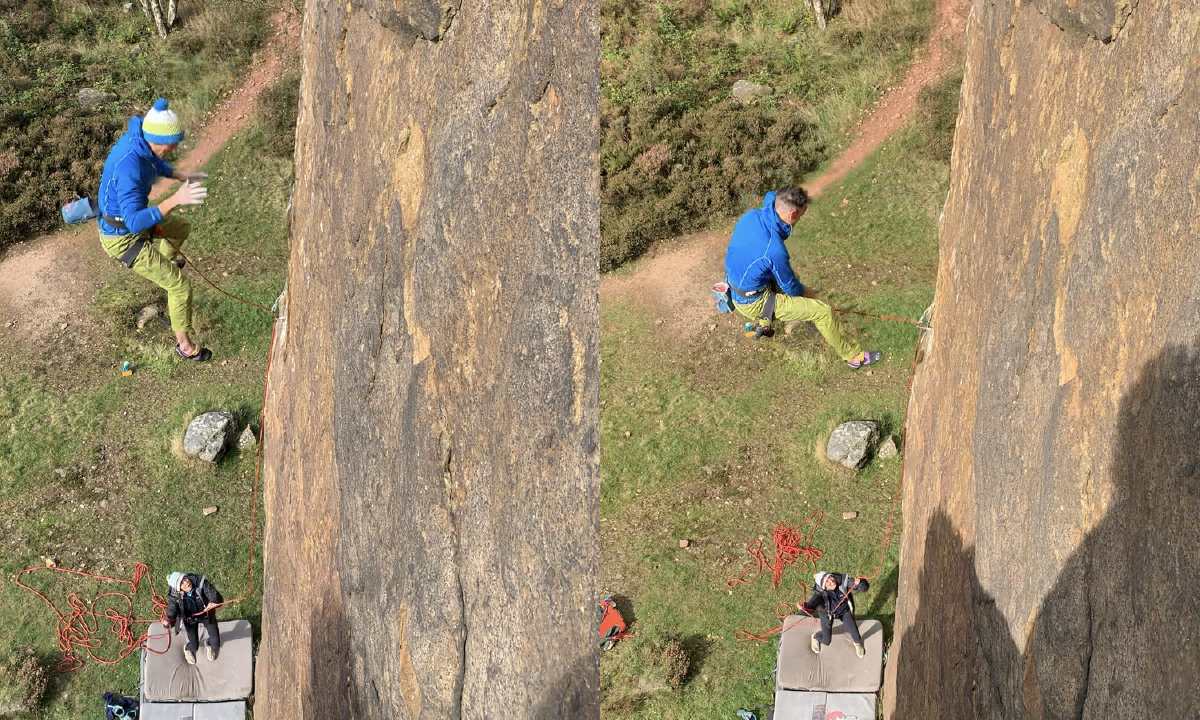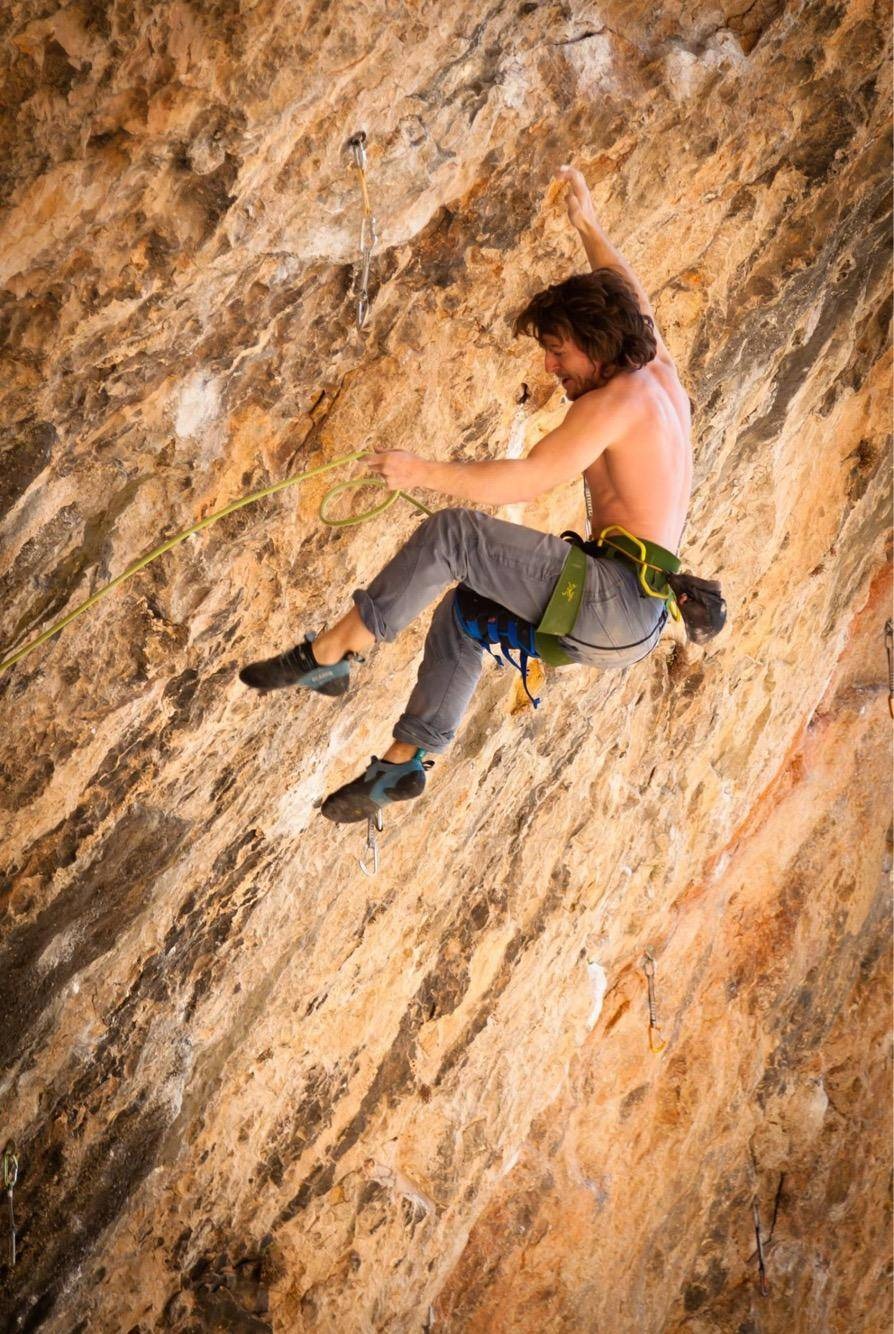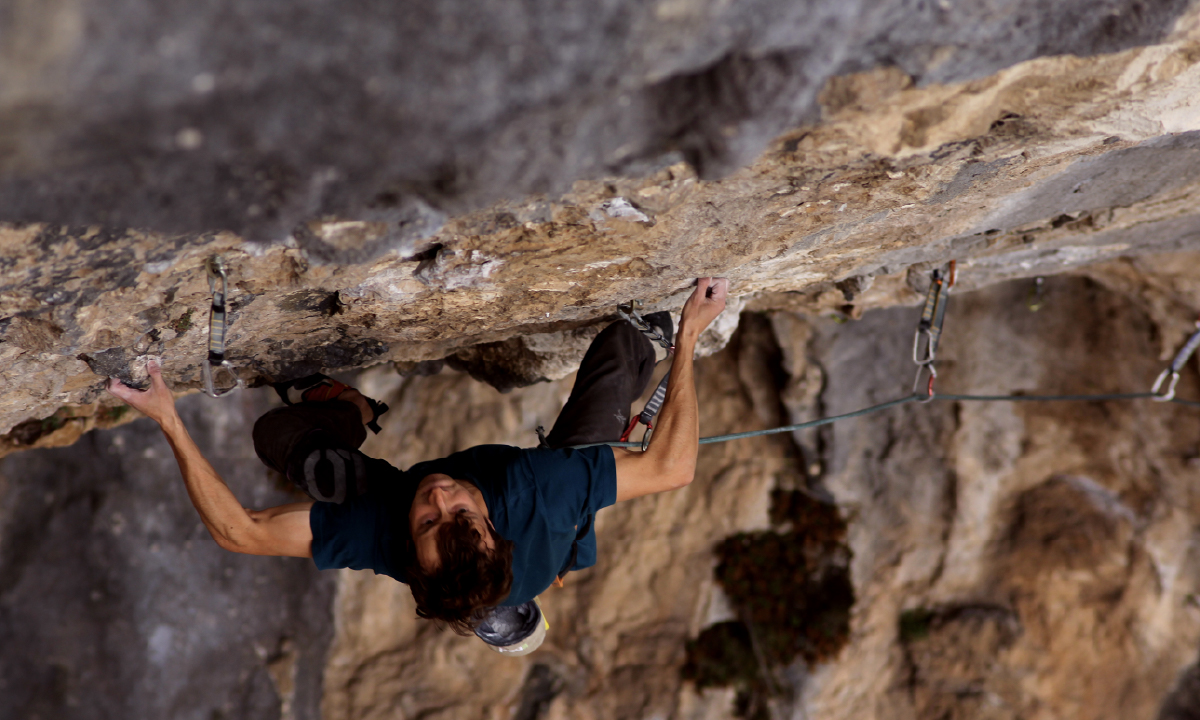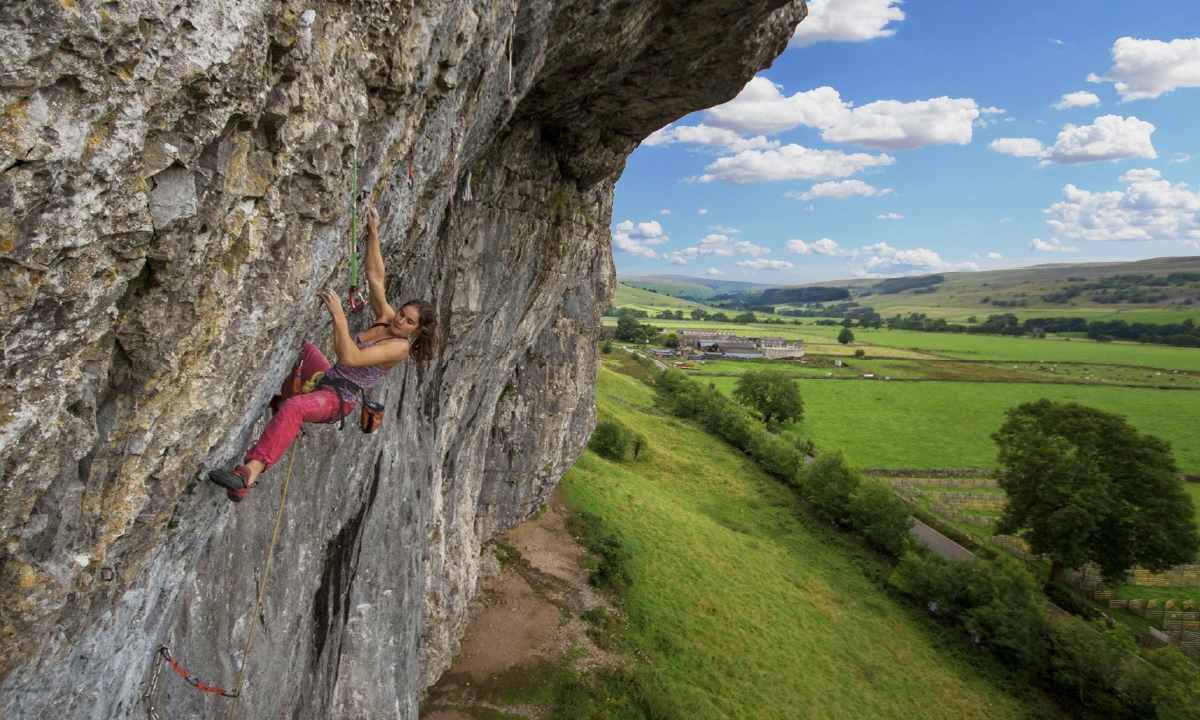Fear of Falling – with climbing psychologist, Allegra Maguire
At Lattice Training we talk a lot about physical training, but head-game is something nearly every climber has to learn to manage. Mental training can be the difference between a great climbing experience and a terrible one. So, in this blog post we have collaborated with climbing psychologist Allegra Maguire to talk about the science of fear and the fear of falling, as well as look at some proven tactics for moving past it. Prefer to watch or listen? Scroll to the bottom of this page to find our full YouTube video on The Science of Fear as well as a recent podcast with Tom Randall and Allegra Maguire on the Psychology of Mental Toughness.
What is fear of falling?
This may sound like a simple question, but it can help to understand the underlying science of fear. Fear of falling is an innate, genetically determined reaction that aims at protecting the body, and ultimately, the animal’s life (yes, we are also animals!). The most ancient part of our brain, signals this threat by multiple reactions that prompt the “fight or flight” response. The intensity of these reactions is tightly linked to anxiety, an emotion characterised by worry for future events.
Anxiety can be enhanced through association of both thoughts and behaviours. For example, you tried top roping and didn’t like the height. You watched people taking lead falls and decided that looks too scary (“I will not be trying that”). Or maybe you were fine with falling, until you took a bad fall. When you have particularly bad experiences, your brain is going to set up connections between falling and an outcome it will want to avoid at all costs. This doesn’t just have to be one big nasty fall. The intense anxiety could be an accumulation of many slightly negative experiences when falling. Either way, on a conscious level we know a small controlled fall is harmless but that doesn’t stop us feeling fear. When this threat is triggered, the fight or flight response is triggered.
Fight or Flight is a fear response – As soon as you anticipate a dangerous situation your amygdala gets to work and triggers the sympathetic nervous system. Signals are sent out to release ‘stress hormones’, like adrenaline and cortisol. These kick the body into high gear, so it becomes tense and alert. Some ‘stress’ can be good but too much, as in the case of cortisol, is not a good thing. Interestingly most climbers overestimate the amount of ‘stress’ that is optimum for performance! When the stress level is too high, fight or flight is triggered and you have it associated with negative emotions or thoughts, it becomes difficult to focus on small tasks. Your brain is preoccupied with the fear and your performance will drop.

How do we unlearn this fear of falling?
As most fears are built or reinforced through learned associations, the reaction comes from the brain making predictions based on previous experience. But these can be removed in the same way, by making positive associations with the experience of falling! Fear extinction is defined as “a lessening of conditioned fear responses following extinction training, during which subjects are exposed to repetitive presentations of conditioned stimulation”. Essentially, removing the outcome which we have learned to predict. For this to work it is extremely important that the exposure to the fear stimulus is a positive experience. This means not pushing too far.
The fear response triggered by the anxiety justifies the anxiety itself. The physiological processes that follow adrenaline flooding our systems can be unpleasant and draining. Faster heart rate, tensing up, sweating, feeling panicky etc. This means your brain decides “the last time we did this, it was BAD!”. This is unfortunately enough to form a negative feedback loop and the worse the experience, the longer the and more potent the fight or flight response is.

However, there is a way out, a way to “hack” the brain. The brain also releases dopamine during the fight or flight response. Dopamine is a neurotransmitter “chemical messenger” that plays a role in how we feel pleasure. So when the fearful situation does not become overwhelming or traumatic we can end up enjoying the experience. This is why we like roller coasters and watching scary movies. So the same neural pathways that trigger fear can also trigger excitement!
Now we can start to understand how we can use small doses of fear to expand our comfort zone with falling. You need to expose yourself to repetitive presentations where the task is not associated with our preconceived notions of risk. This means taking falls that feel relatively comfortable and building out from here. Make sure the dose is small enough that the fight or flight response is only as bad as watching a scary movie, perhaps a PG-13. This will leave us enjoying the experience. It’s important to not push this too far too quickly. Doing this will strengthen the phobia association and be counter-productive.
Principles of Fall Practice
You need to remember the intention of the session is to reduce the anxiety before and after each fall. We need to find the right balance for the training to work. Some key points to remember are:
- Start your session feeling energised and in a positive mindset. If you’re not in the right mindset the fight or flight response can quickly become too much to handle. If you’ve had a big day at work or a stressful experience it’s worth sticking to an easy session closer to your comfort zone.
- Start in your comfort zone and work outwards gradually. It’s important to listen to your body when doing fall practice to be able to judge the intensity right. Your fall practice sessions should leave you feeling positive and excited to do it again, not exhausted and hating fall practice. We’ll talk more about a practical structure to help you with this later.
- The fight or flight response is hard on the body and fear is fatiguing. When doing fall practice, limit the time of the session. If you feel the mental fatigue starting to kick in it’s probably time to call it a day.
- Throughout fall practice we want to associate falling with being relaxed. When doing falls, focus on doing some calming breaths and keeping your body relaxed. Try to keep your arms down by your side and face relaxed. You could even try smiling whilst falling! If you’re finding it difficult to breathe slow, that your body is tensing up or that you’re grabbing the rope when falling, you may have pushed the practice too far out of your comfort zone for the experience to be positive.

How to do Fall Practice
Now you understand the principles of an effective fall practice session, we can look at structuring a session and what it might look like.
Step 1 – Top Rope Falls
During this first stage of fall practice you will be on a top rope. First ask your belayer to take at a comfortable spot on the route. Now start to bounce and swing on the end of the rope. You can do this close to the ground if you’re just earning to trust the rope and harness. You want to focus on keeping your body relaxed (keep your arms relaxed beside you not tightly grabbing onto the rope).
Once you’re comfortable with these bounces you can build up the intensity of fall on a top rope. Start by taking falls when there is minimal slack in the system and gradually build this up. Remember you want to keep your body and breathing relaxed throughout the session. Once top-rope falls with slack in the system feel okay you can move onto fall practice on Lead.
Step 2 – Lead Falls
Again begin your session with bounces as you did with top rope. Then move onto lead falls below the bolt. After this, gradually build up to taking falls at the bolt. You can then progress to falls above the bolt, gradually increasing how high you go. Another way to add stimulus is to make a clip then fall. You can also practice falling mid move.
Ideally, you would want to start your lead practice on a slightly overhanging wall, so that the fall will be completely in the air and the fear of hitting the wall will be minimized. Then you can progress to vertical (or even slab) walls.
Remember this should be a positive experience and falls should only feel slightly uncomfortable! Check in with yourself after falls and adjust the stimulus level accordingly. Did you grab the rope? Are you tensing up as you fall? Do you close your eyes and scrunch your face? If yes, you probably need to go back to an easier fall for a while. This will be much more productive than pushing it too far and reinforcing that fear association!
Step 3 – Lead Performance
The next and final step in overcoming your fear of falling, is integrating practice fully into your normal climbing. This might be done on redpoint routes where you really have to try hard and the chance of falling is high. Whilst doing this you want to focus on breathe, flow and relaxing. It might help to do well rehearsed routes so you don’t have to concentrate so much on the climbing. This way you can focus on feel calm and relaxed! You might also try limiting the communication at the point at which you fall.
Beyond this you want to move to hyper-focused climbing practice. This is about attention and being in the moment while climbing. This is the other side of the coin to fall practice in some ways. You will release attention from falling if you are hyper focused on climbing. Focus on the body position, the tension in your grip, the texture of the holds, the depth of your breath.

Extra Tips and Tricks to Help Overcome Fear of Falling
There are a few other tips and tricks that can help you manage that fight or flight response and improve the effectiveness and quality of your fall practice.
Counterfactual Thinking and Visualisation
The brain has a way of dwelling on negative outcomes that may never have happened or are very unlikely to happen. If you have ever stood next to a cliff and imagined what it would feel like to throw yourself off, this is counterfactual thinking. It can work in the past, present or future. This is a negative form of visualisation that can hijack your emotions. However, you can take control of this and instead focus on positive visualisation. Imagine the best outcomes, enjoying the perfect catch from your favourite belayer and what it will feel like to be unrestricted by the fear of failing.
Counterfactual thinking might also allude to what scares you the most about falling. An important part of overcoming the fear of falling is knowing what about the process is most worrying. Is it the gear? Picture the gear being solid, practice sitting on the gear. Is it coming into the wall hard? Picture a lovely soft catch, talk to your belayer about giving you a soft catch.
Self Talk and Your Inner Monologue
Your working memory primarily takes in sensory information limited in capacity (an attention span of ~1min). It’s thought that working memory works best through speech and this is where your internal monologue comes from. Working memory is important for reasoning and the guidance of decision-making and behaviour. This is where positive self-talk can have a big influence on your courage and confidence. You can build positive emotions based on what is holding you back most. “One step at a time, you’ve got this”. “my belayer has me”. “it doesn’t matter what people think, I’m going to take a fall and expand my comfort zone”.
Releasing your ego
To overcome fear of falling it is important to accept your fear and release your ego. We often see people hiding fear due to not wanting to show weakness in your peer group. They can push through and hope for the best which may work. However it will likely backfire with bad experiences (even if they are consciously unaware of this) which feeds into the negative feedback loop.
Other extremes we see is that you accept you are too afraid and only top-rope with no intention to move past fear of falling. This is a fixed and unhelpful mindset and actually causes your comfort zone to get smaller.
Ego also plays a role in Fear of Failure. This looks like not wanting to fall off easy routes and only climbing things well within your ability. Maybe you don’t want others to say “how did you fall off that!?”.
One of the best tactics for releasing the ego is being open with people and letting others know you have fear. This segways into our next point: good climbing partners essential
Climbing Partner checklist
Partners can make a MASSIVE difference. Ideally you need some that:
- You can be open with (leave your ego at the door)
- That understands the process
- That won’t shout at you “go higher!” but will say words of confidence
- That can give a soft catch.
Try not to shout TAKE! (Once you’re into Lead Performance phase)
If you’ve worked through the fall practice sessions to the point that you’re comfortable with controlled falls, you want to avoid shouting take. This is not going to do anything for your confidence in the long term. It only shows you are not focusing on the climb and a tone of panic can make you panic even more.
However, the aim of fall practice is to reduce anxiety, so if limiting communication makes you feel more anxious and removes confidence in your belayer than of course you need to say things like “watch me here” or “falling”. Just keep your voice calm and overtime aim to be confident falling without needing to warm your belayer.
Individualism
A caveat to all the points mentioned above is that every individual will find their own way of overcoming fear. Different tactics, different speeds, different levels of fear.
Fear acceptance and self-compassion
Finally, it is important to remind ourselves that overcoming fear doesn’t just mean to replace it with feeling relaxed. After some training, some falls will feel like you didn’t even think about them, but in some specific cases, the fear will still be there. It could be because the crux is close to the ground, the falling area is not safe, you have your foot underneath the rope, or you are on the very top of a high boulder. In these cases, in which is absolutely legitimate to feel afraid, fear acceptance is crucial. This translates into learning to manage it so that it empowers you, rather than limits you.
The first step to achieve this mindset is to accept that you will feel fear. Self-compassionately release all self-judgments about the appropriateness or rationality of your reactions or feelings. Finally, with experience you can learn to interpret those same activations as energizing. You absolutely do not want to fall in that situation, but, accepting the eventuality, use the same physiological reaction to exert more power.
Since these situations imply higher risk than usual, it is not usually advisable to deliberately put yourself in those conditions to train this mindset. Rather, learning self-compassion on a daily basis can provide a great tool to maximise the chance of a positive mindset when those situations arise. To do so, one of the strongest instruments is to practice meditation or mindfulness.

How Often Should You Do Fall Practice?
The answer to this question will vary from person to person. Think of your brain as a muscle – it needs training. If you stop training it, it will get weaker. Some climbers may need more mental training to feel comfortable, especially if you can only get the wall once per week. Others may be able to do a short stint of fall practice before a trip and be fine.
Weigh up whether physical training is more or less important than mental training. Fall practice takes time and won’t necessarily be the best form of physical training. However, don’t try to ‘muscle’ your way through your fear. A small amount of mental training can be far more productive than lots of physical training if fear is seriously holding you back.
When doing fall practice, consider your environment and the specifics of the terrain. It will feel different to fall indoors vs outdoors and on vertical terrain vs overhanging. For many, indoor fall practice is the most practical way to get training for your fear of falling. Overall you should try to keep the angle and terrain as specific to your goals as possible.






Thank you for this, it’s really going to help me get over my fear of falling